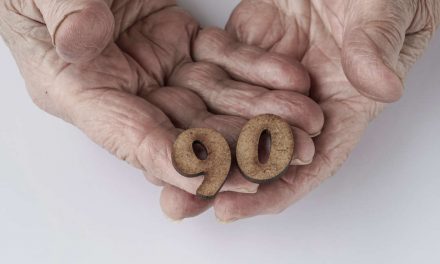An older resident, (let’s call him Rafael), born in Italy, an artist, dealing with late stage dementia, losing his ability to communicate in English, reacting in unpredictable ways, such as screaming in Italian whenever anyone wants to provide support of any kind, and visibly agitated at his loss of control . . .
An older resident, (let’s call him Rafael), born in Italy, an artist, dealing with late stage dementia, losing his ability to communicate in English, reacting in unpredictable ways, such as screaming in Italian whenever anyone wants to provide support of any kind, and visibly agitated at his loss of control . . .
Limited Options
Let’s be honest, there’s not a lot of options to help residents find comfort during these difficult situations, which has led to a dependence on pharmaceutical solutions.
That is, unless you’re Vetter Health Services in Nebraska.
The mindset at Vetter is not to focus on the problem, but instead to find innovative solutions that bring out the best in the person. Their solution for Rafael was not to take the traditional psychotropic drug route, but to invite him to sit comfortably in front of one of our iN2L, (a Senior Housing Forum Partner) touchscreen adaptive computer systems.
With a paintbrush in hand that he used to interact with the touchscreen, Italian opera music playing on the system as background motivation, Rafael finds solace. He is transformed in the eyes of those who care for him from a “behavior risk” to the person he is—an artist, expressing his love of painting while enjoying his love of opera.
New Technologies
Keep Rafael’s experience in mind as your organization contemplates investing in new technologies.
We seem to be discovering technology’s vast potential–for healthy aging, for staying at home longer, for fitness, and for wellness. But what’s real and what’s hype? What separates a gimmick from a meaningful technological product that benefits the people being served? These are the questions facing older adults, as individuals, and senior living owners/operators, as care providers.
The Right Technology
My observation, which stems from my Sisyphean-like task of pushing It’s Never 2 Late up the mountain for 15 years, is that the person who may be in the most need is too often the person who is least likely to be able to demand it or for that matter articulate their needs—the person living with dementia. It’s easy, and somewhat understandable, to focus on brain fitness, wellness, things that can help keep minds active and sharp and, theoretically, delay the dementia process as the primary focus of person-centered technology in senior living .
However, we miss the mark if our obsession to make someone “better” trumps simply making their day more enjoyable.
The joy we at iN2L have experienced over the years comes from seeing how lives can dramatically improve through creative uses of engagement technology. Engaging people though video clips of dairy farms, soulful renditions of Amazing Grace, virtual tours of the Louvre, in short, options that center on the each person’s needs, interests and history, can provide moments of unfettered joy that can be strung together to bring a sense of comfort.
This is not about iN2L being the only solution. We at iN2L love what we do and we’re fiercely proud of our product, but there are multiple options that should be vetted—products like Linked Senior, Connected Living, Simple C, iPads and iPods. This is not about iN2L pushing one product over the over, it’s about senior living providers recognizing that technology solutions are just as important for their residents living with dementia as they are for the independent-living folks, maybe more so. It’s also about integrating the strength-based approach that Dr. Judah Ronch so eloquently advocates — creating environments that provide all residents opportunities for success and increase the number of joyful experiences. If you’re skeptical, ask Rafael . . . but you may need to schedule time to see him, he’s probably busy painting again.
Jack York, Co Founder of It’s Never 2 Late








